

Damion Smy
China bans Tesla-style door handles
1 Hour Ago
New HiLux, Ranger and D-Max are getting the attention, but this pair of mid-range workhorses are budget-friendly options.

Senior Contributor
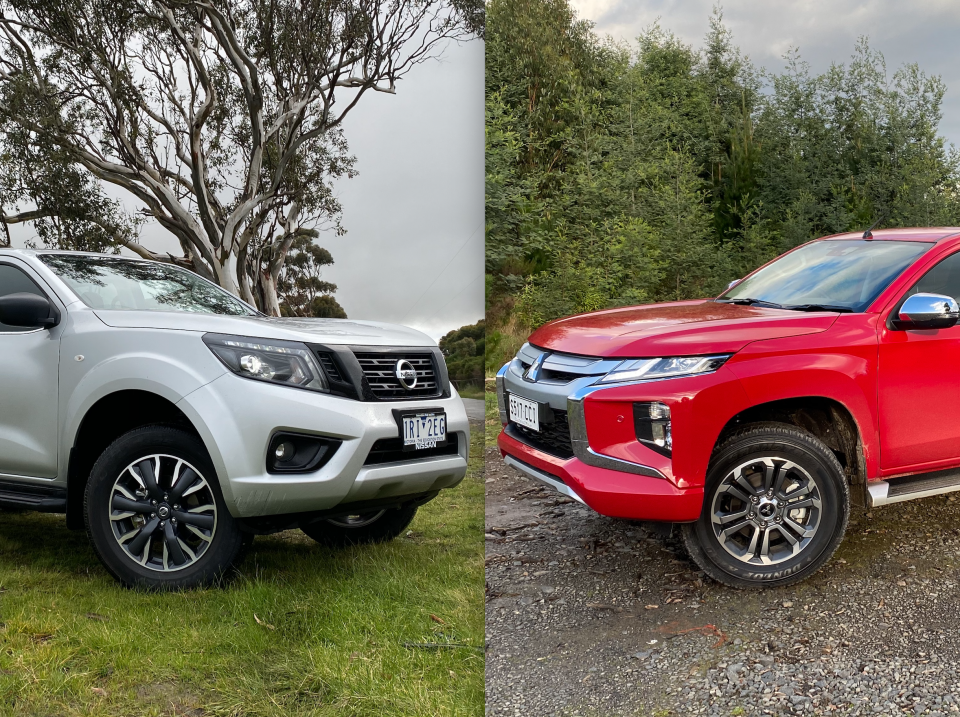

Senior Contributor
We recently spent time in two similarly positioned utes that have been battling for attention amidst fanfare around the new Isuzu D-Max and Toyota HiLux.
So we thought it might be good to explore the pros and cons of each. While we know these partner brands will co-develop the next Triton and Navara under a leader-follower tactic, the two current models are quite different.
Disclosure: The press vehicle loans didn’t precisely overlap, hence the ‘hero’ image splicing them together. But we did drive them both within the space of a fortnight in pre-Stage 4 lockdown Victoria.
The grades being tested both sit in the middle of their respective ranges. They’re not stripped-out, vinyl-floored work trucks, nor are they high-end luxury utes. They’re the Mitsubishi Triton GLS and Nissan Navara ST.
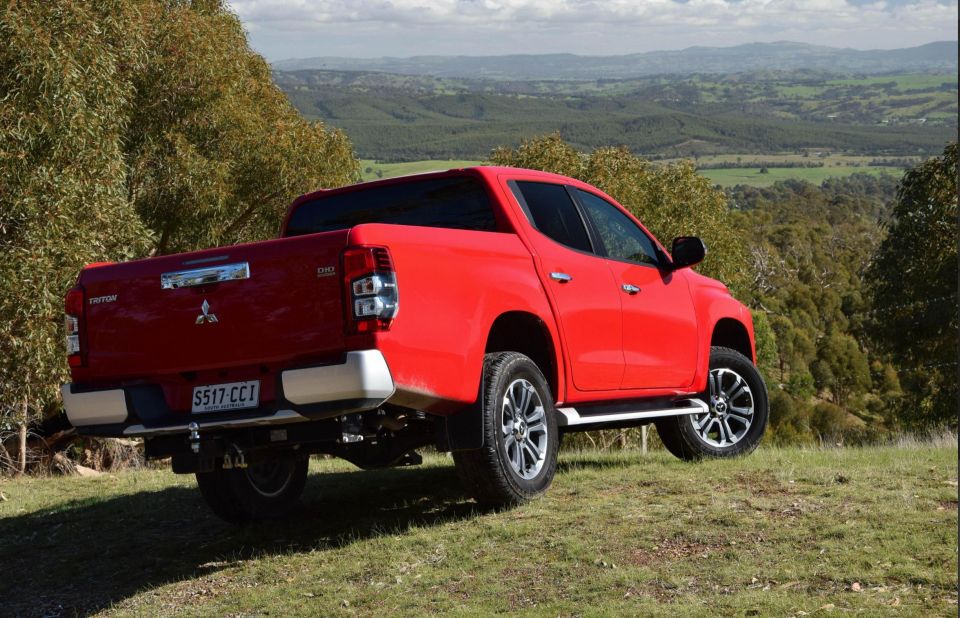
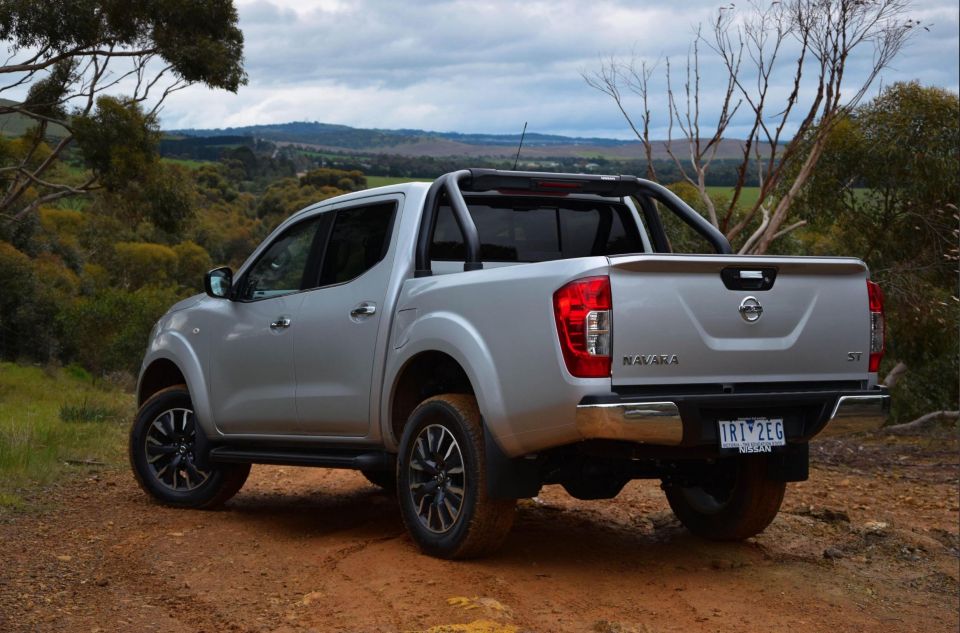
The Triton GLS wears a recommended list price of $47,940, compared to the Navara ST’s $51,250. These prices are before state taxes, rego, and dealer delivery.
But as is common with utes, there are much sharper deals to be had. Be sure to do a little homework in lieu of paying the full-whack, now more than ever.
At the time of writing the Triton was going for $46,290 drive-away on Mitsubishi’s website, and the Navara for $45,690 drive-away for ABN holders. There are always deals on each brand’s site to peruse before heading to a dealer.
After a little more luxury? There are the Triton GLS Premium and GSR, and Nissan Navara ST-X and Warrior models to consider. For those who want to save their pennies, consider the stripped-back Triton GLX+ or Navara SL.
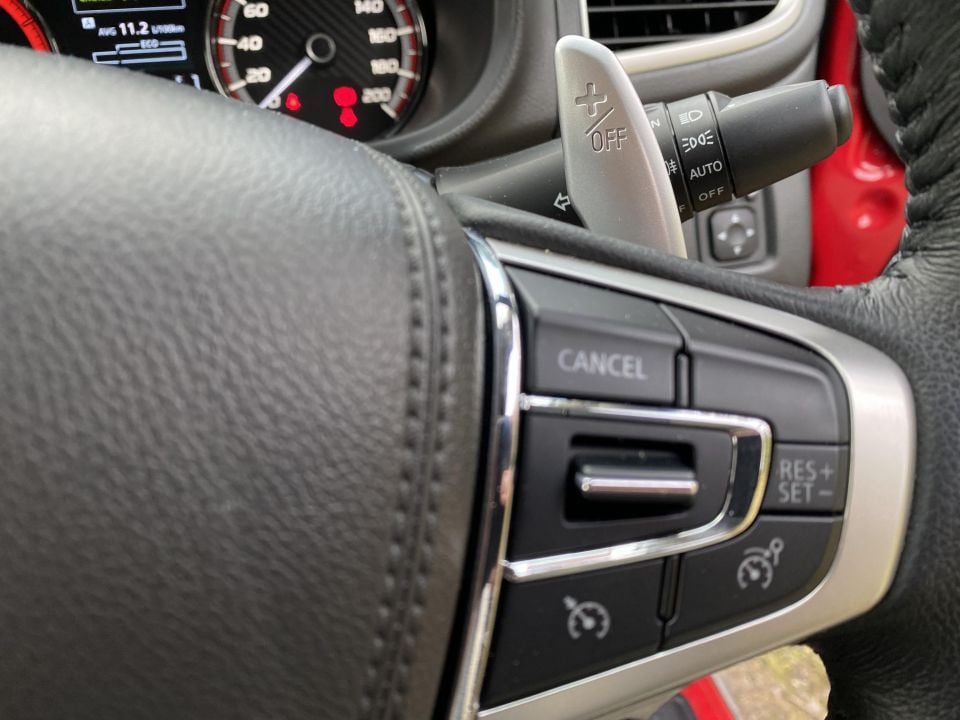
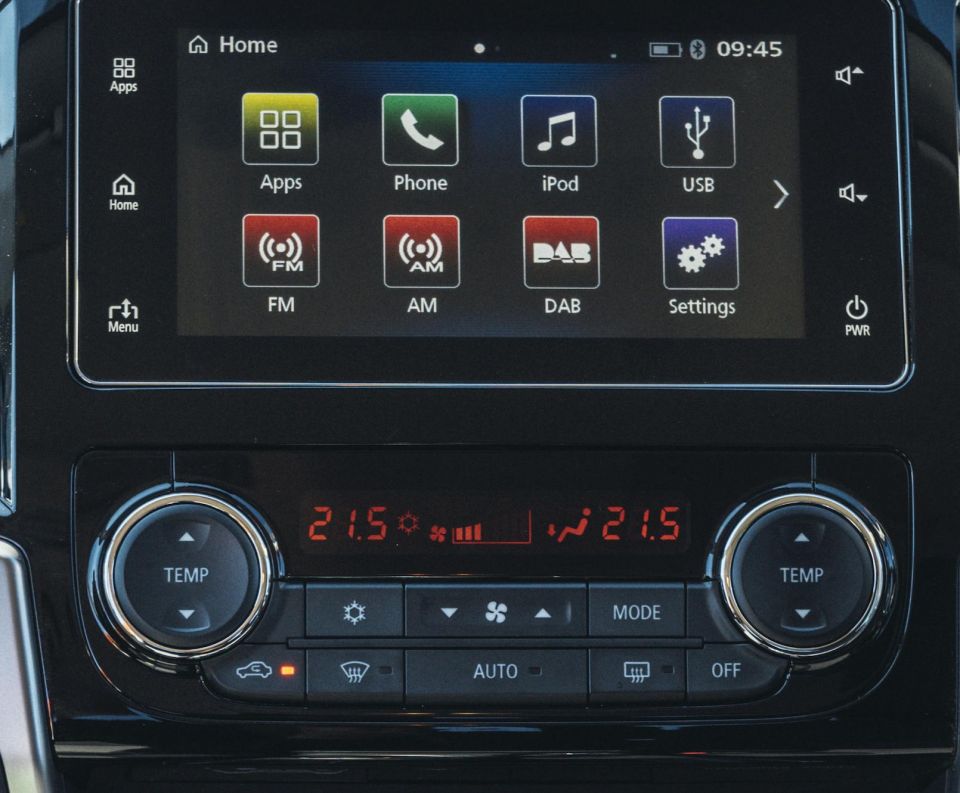
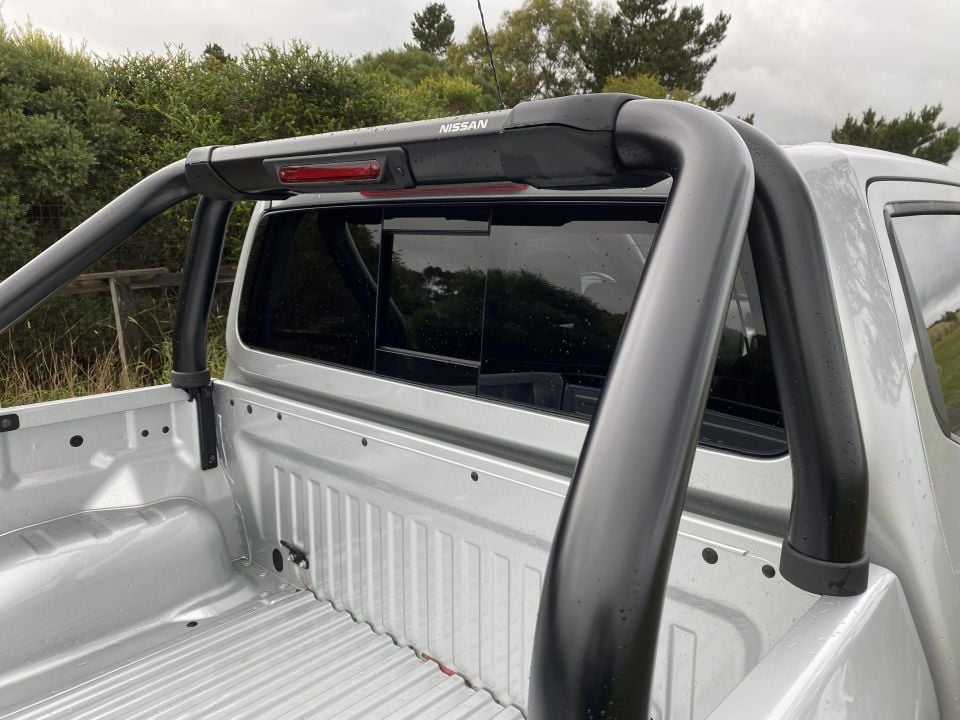
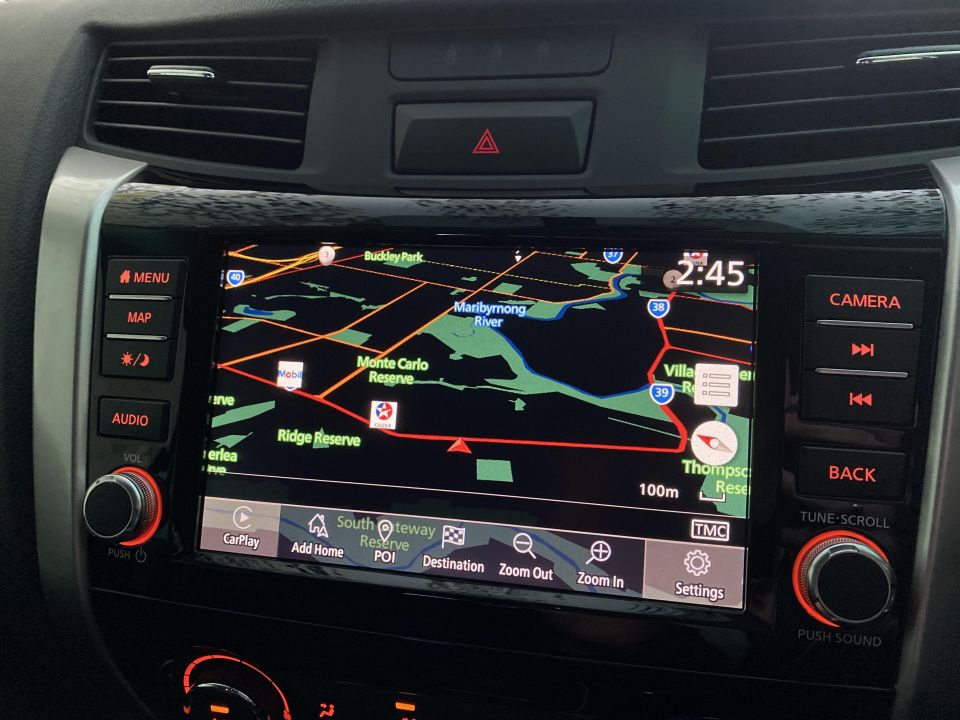
Both get 18-inch alloy wheels, LED headlights, side steps, rear darkened privacy glass, and electronically-controlled locking rear diffs. Neither has a standard tub liner at the tested spec grade, though our Triton had the accessory option fitted.
Inside each comes with carpet floors, fabric seats, non-adaptive cruise control, air conditioning, Apple CarPlay and Android Auto, Bluetooth, front USB access, and a reverse-view camera.
The Triton alone gets a full-sized alloy spare wheel (steel for the Navara), button start and proximity key fob, rain-sensing wipers, dual-zone climate control, digital radio receiver, two rear-seat USB points, and parking sensors at both ends.
On the other hand, features unique to the Nissan include a sports bar in the tub, a larger 8.0-inch touchscreen (7.0 inch in the Mitsubishi), factory satellite-navigation, and a power-opening (sliding) back window overlooking the tub.
On this basis, the Triton offers more kit.
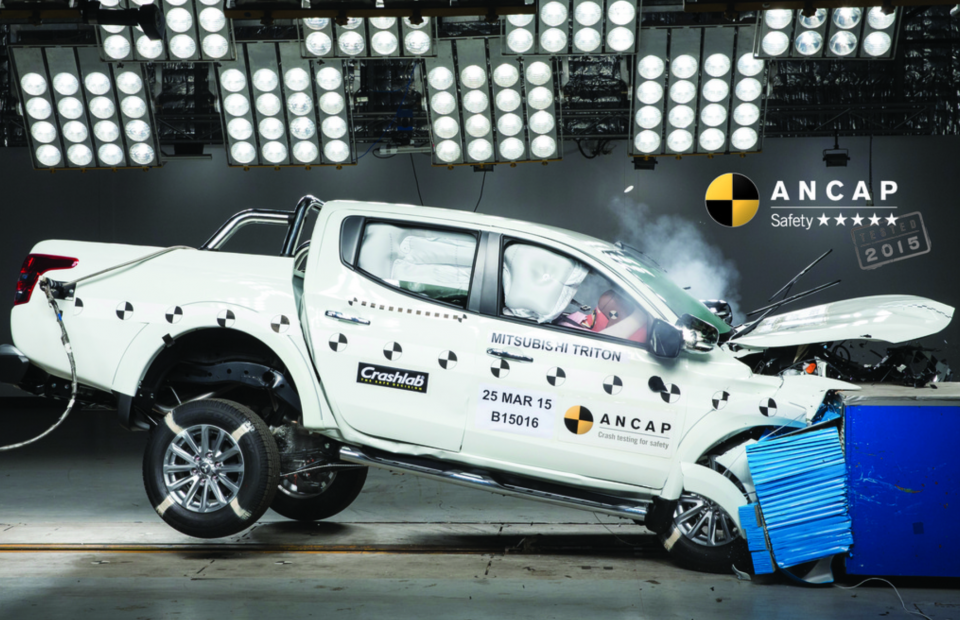
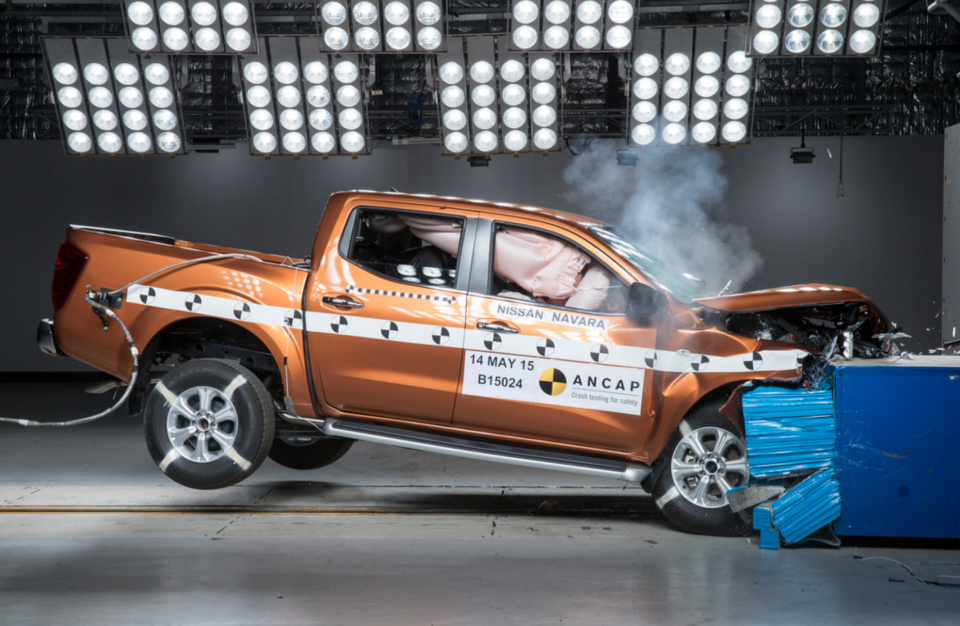
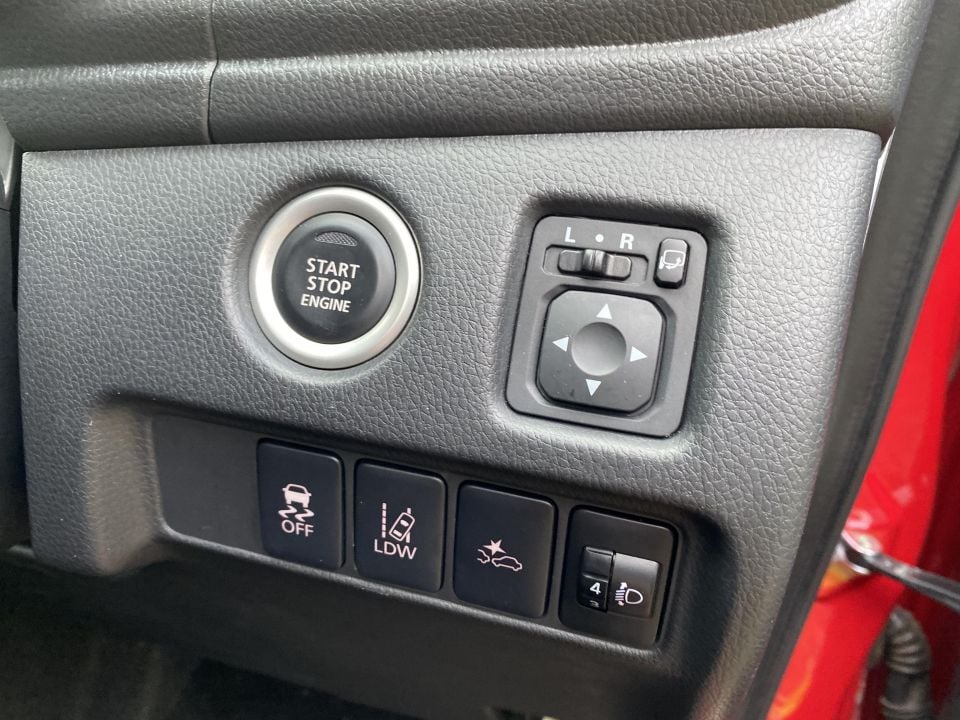

Both vehicles have five-star ANCAP crash ratings with 2015 date stamps, and seven airbags – including one for the driver’s knee, dual-front and dual front-head, and full-length curtains covering both seat rows.
But the Triton offers autonomous emergency braking (AEB) with pedestrian detection, lane-keeping alert, blind-spot monitoring lights in the side mirrors, rear cross-traffic alert, and automatic high-beam shutoff for oncoming traffic.
The Navara does not come with these active safety features, making it a class outlier against competitors replete with sophisticated crash-mitigating technology of this type.
For those planning on using their new ute as a family car, both come with ISOFIX anchor points for child seats.
The Triton has metal top-tether points accessible behind the rear seat backrest, whereas the Navara sports a centre-mounted fabric loop for the top-tether point, which works in tandem with the metal poles in each outboard headrest.
| Mitsubishi Triton | Nissan Navara | |
|---|---|---|
| ANCAP rating | Five stars (2015) | Five stars (2015) |
| Airbags | 7 | 7 |
| AEB and collision alert | Yes | No |
| Lane-keeping aid | Yes | No |
| Blind-spot monitor | Yes | No |
| Rear cross-traffic alert | Yes | No |
| Auto high beam | Yes | No |
| Cruise control | Passive | Passive |
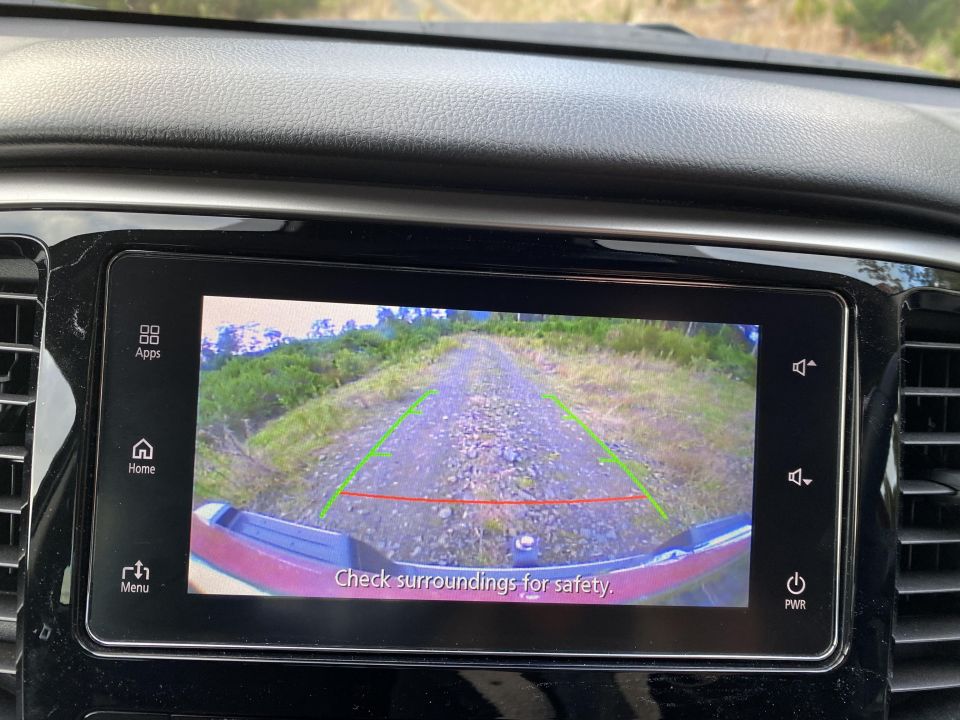
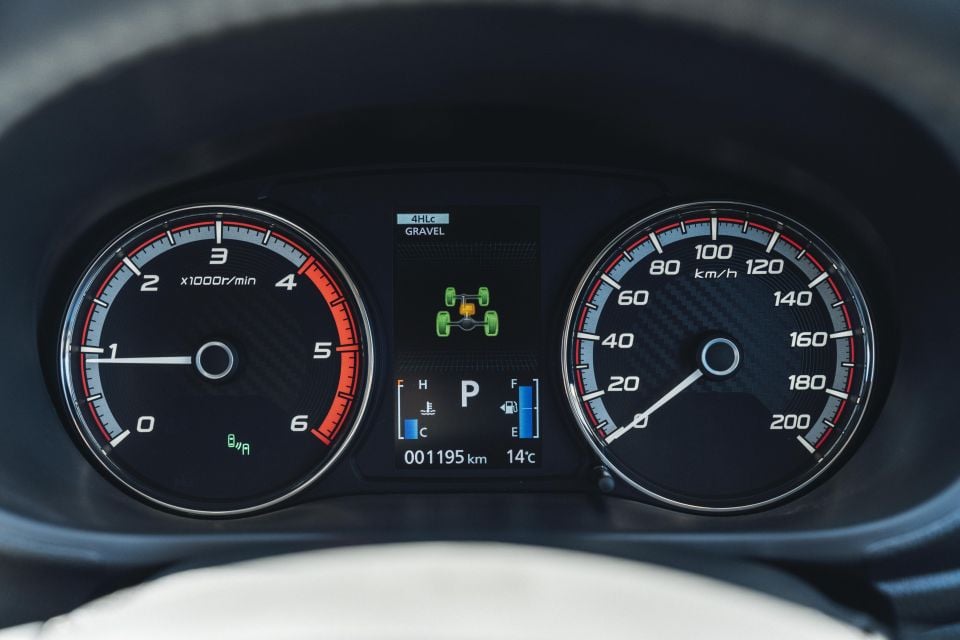
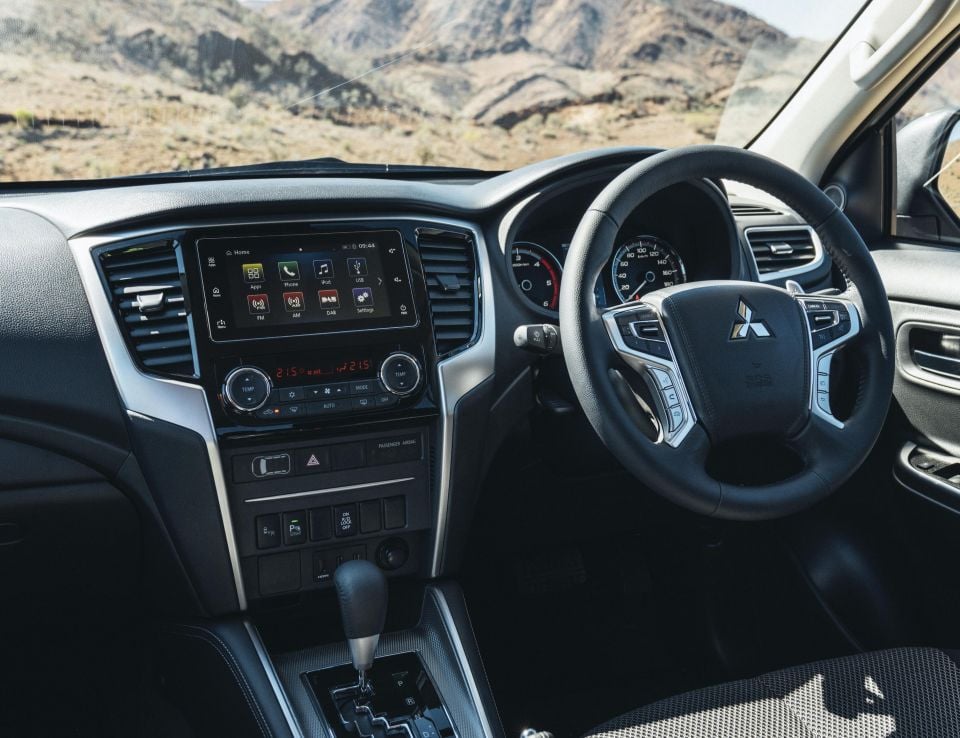
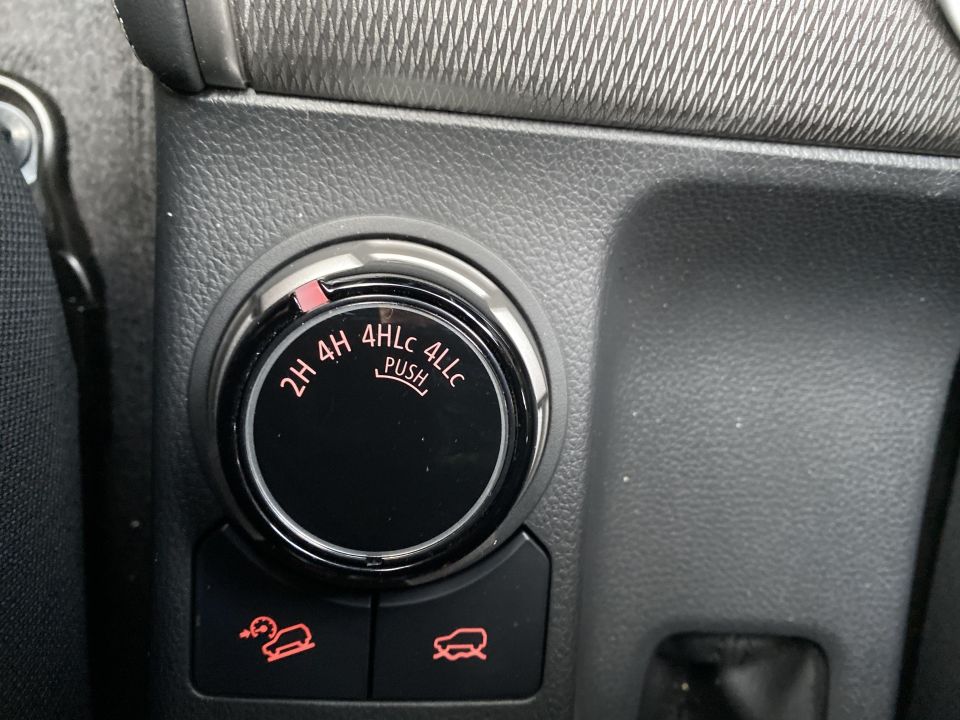
Mitsubishi
The Triton’s interior is fussy and full of button-blanks, but well made and ergonomic. The panels are hard-wearing and fit together consistently, and over corrugated roads there’s no rattling.
Nice touches for the GLS include knee padding along the transmission tunnel, Evo rally-car shift paddles mounted on the steering column, and silver and black trims.
There is telescopic adjustment for the steering wheel – unlike the Navara – and the seats are trimmed in tough, nicely-patterned, fabric. There are multiple grab handles to help you up as well.
Storage spots include cupholders, an open cubby ahead of the gear shifter, a narrow centre console, big doors bins with room for a bottle or two, and a glovebox.
The analogue driver instruments are clear and the screen between them shows trip data and four-wheel drive system settings, but lacks a digital speedo. This feature should be mandated given police speed-limit tolerances.
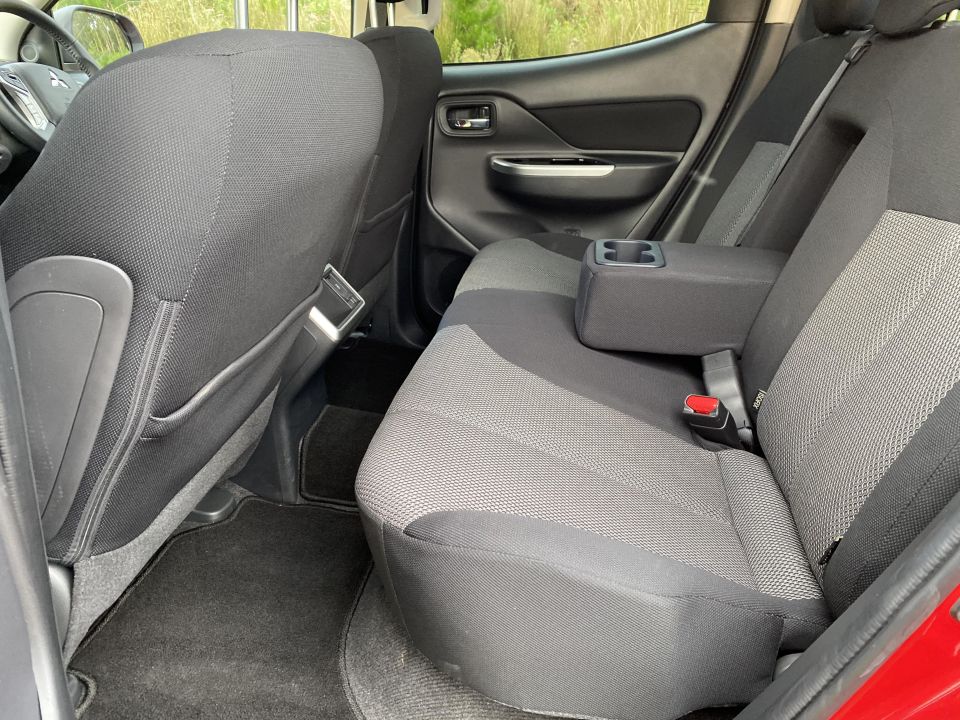
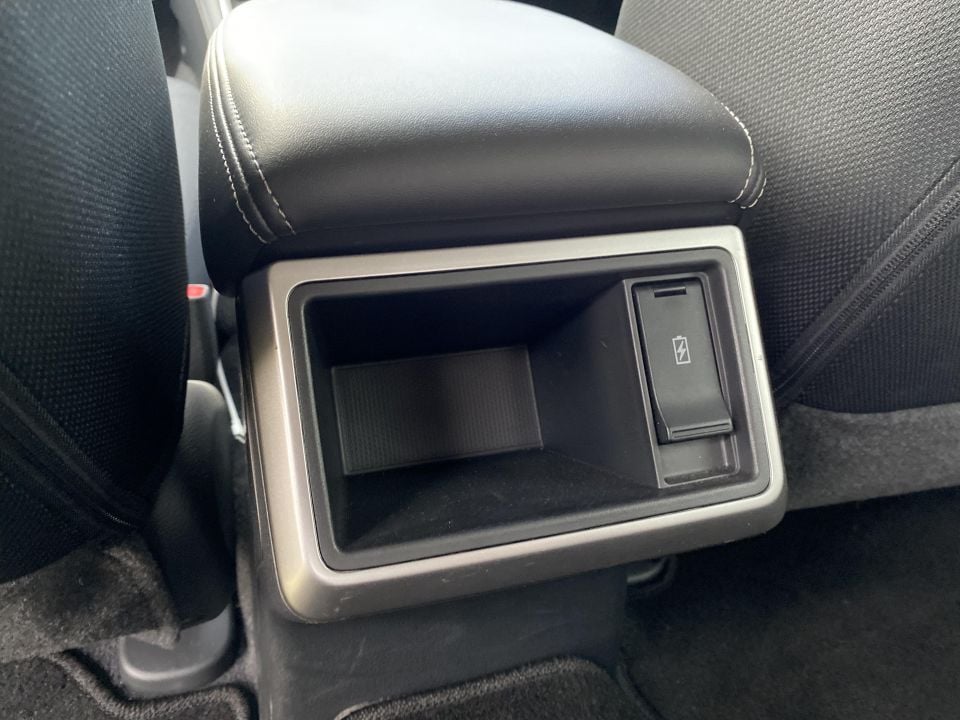

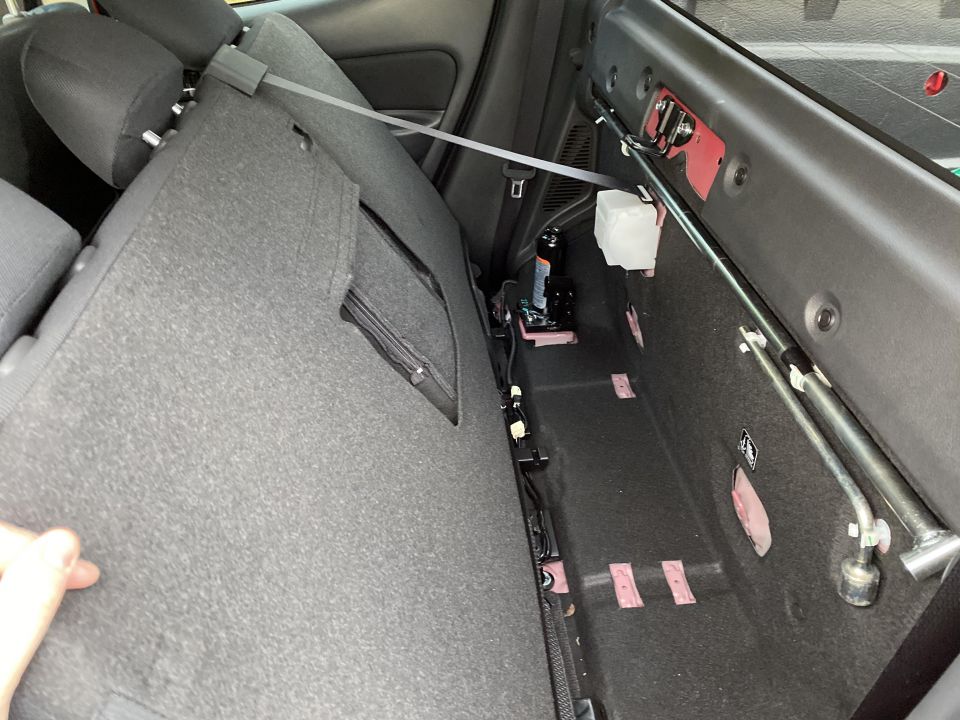
The centre screen is basic but works fine. Bluetooth phone quality was sufficient for highway calls and the reversing camera has clear resolution. Some might rue the lack of satellite navigation, but Apple CarPlay and Android Auto allow Google Maps or Waze access so long as you have signal.
Because the Triton is a narrow by class standards, you sit closer to your passenger. However there’s ample headroom and shoulder room for most. The front shoulder room measurement is 1430mm across.
Between each outboard rear seat is a pull-down armrest with cup holders. Back-seat occupants have their own two USB points, grab handles on the B-pillars, reading lights, folding overhead handles, and air vents in the roof with controls.
I’m 194cm and had adequate knee room and foot room behind my own driving position, but average headroom, since the seats are mounted quite high.
As for the tub? It measures 1520mm long with the tailgate up, 1470mm wide, 475mm deep, and 1085mm between the arches.
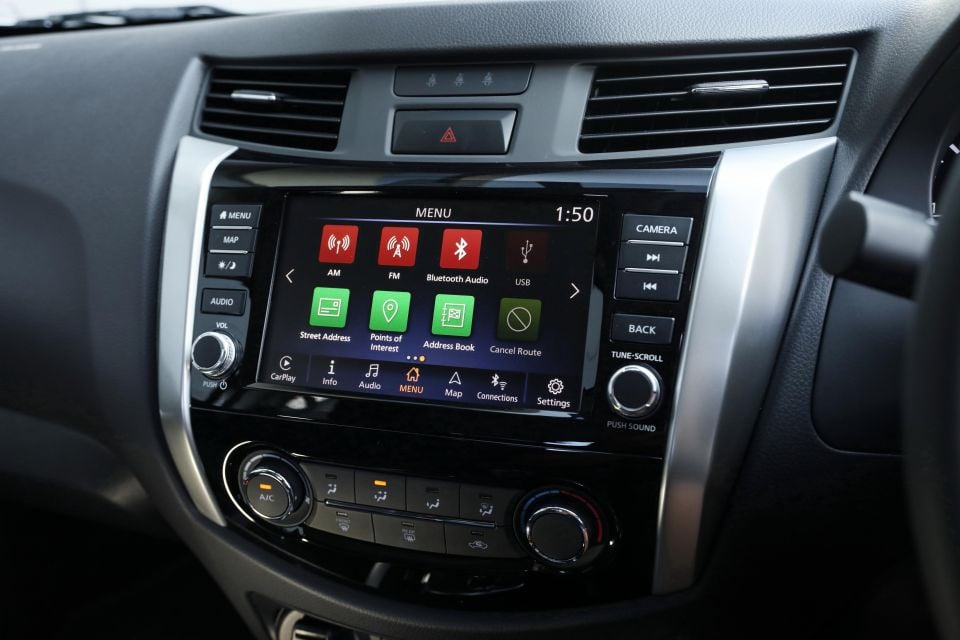
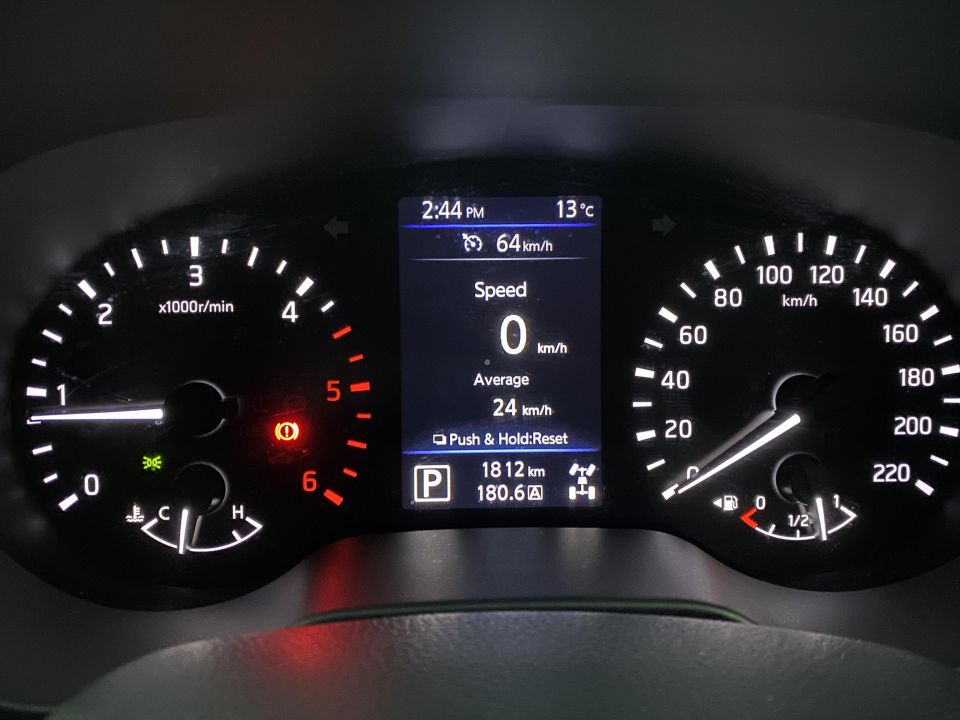
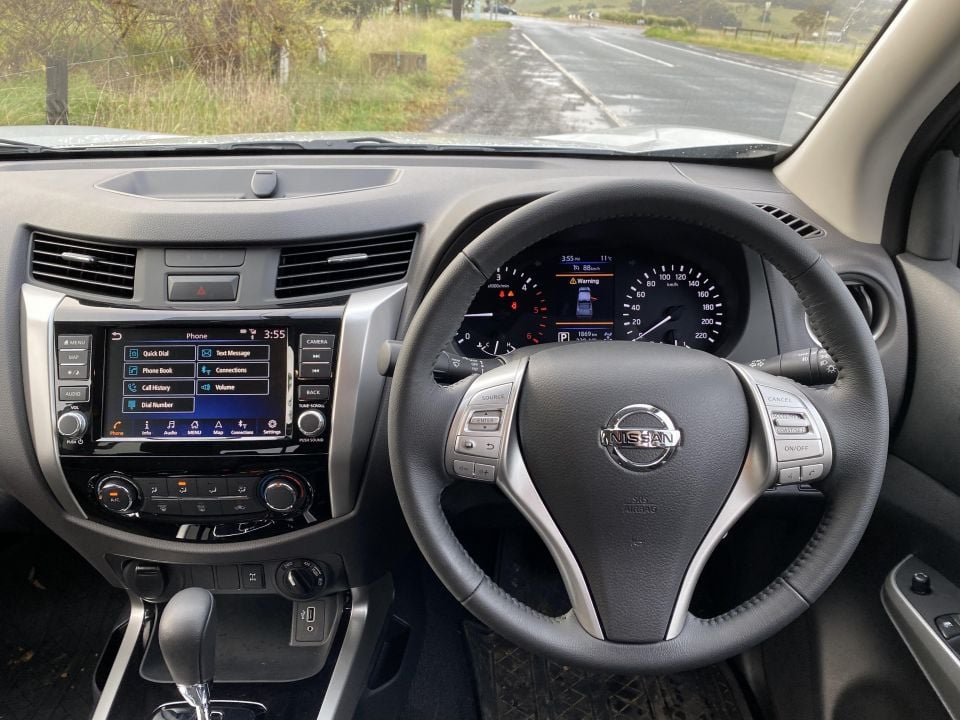

Nissan
The Navara’s interior feels particularly well put together, and is constructed of hard-wearing materials that don’t feel flimsy or scratch-prone.
The seats are trimmed in softer cloth, there’s a digital speedo, and the rear-view mirror is auto-dimming and has a novelty integrated compass.
The lack of telescopic reach adjustment for the steering wheel is frustrating, ditto the limited seat-height settings. As such, I had to sit too close to the wheel for my long legs to be ideally comfortable, and couldn’t easily see the instruments.
The steering wheel itself has a pretty odd design, with the horn sensor active right at the bottom of the wheel rim meaning you might honk while taking a roundabout. Every time I drive a Navara the same thing happens to me.
Storage areas include helpful cup holders under each outboard vent, a shallow cubby atop the dash with a 12V socket integrated, a smallish console, door bins, and two cupholders along the transmission tunnel.
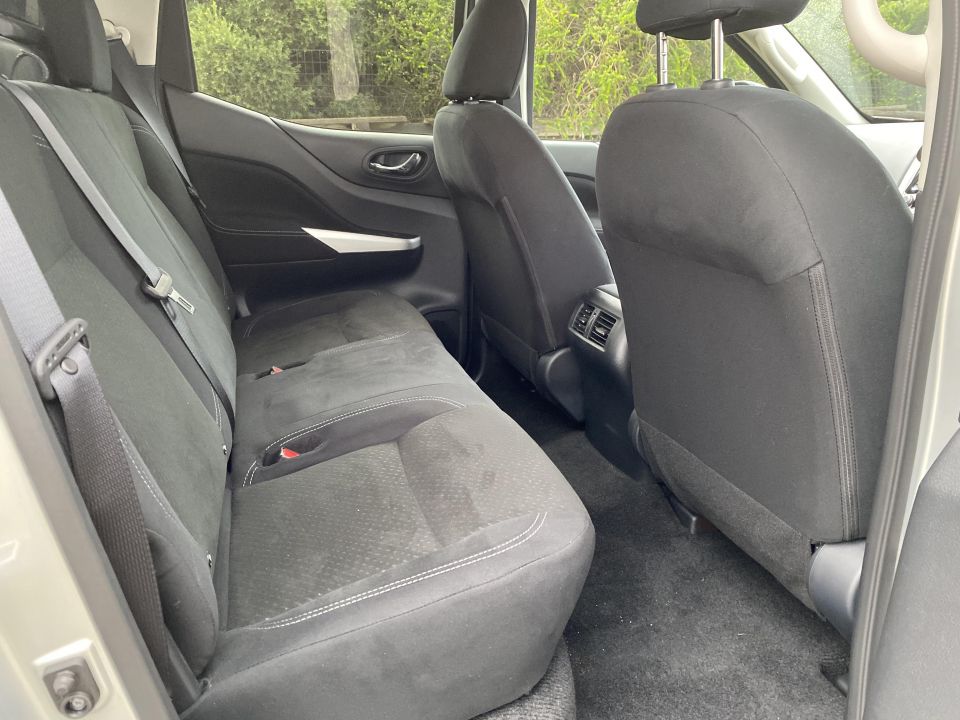
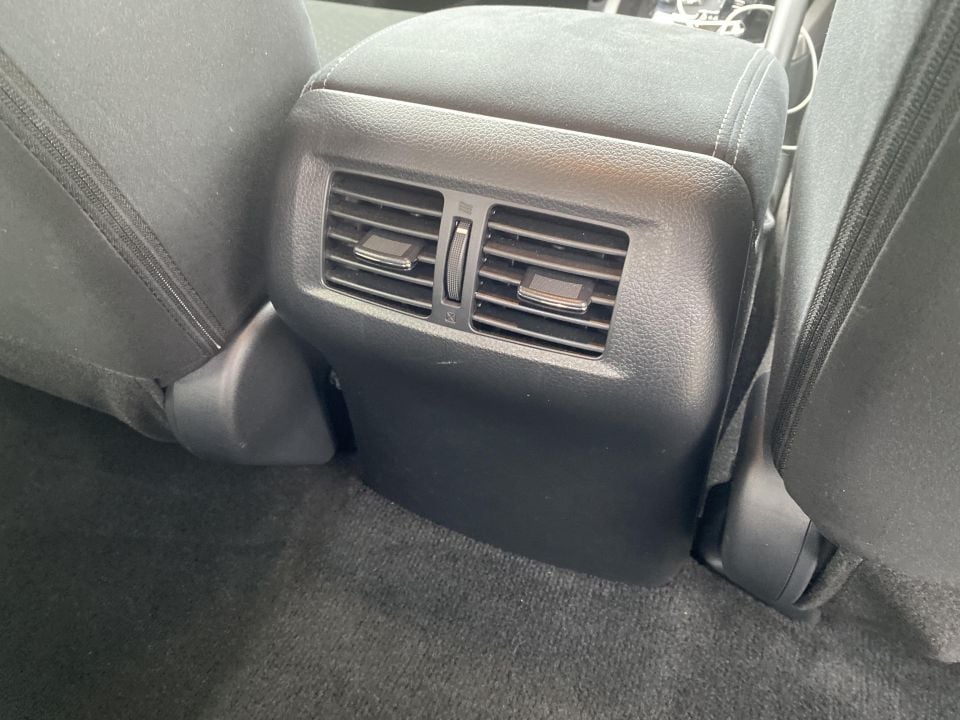

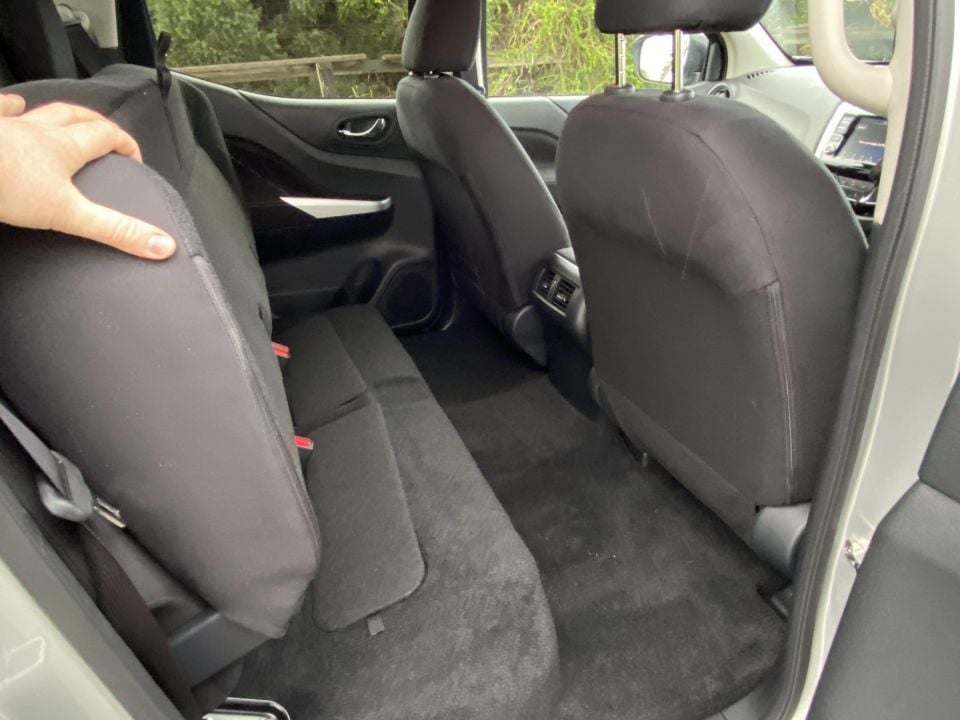
The centre screen is flanked by the same fascia and shortcut buttons as the pre-update model but takes more real estate. This unit was developed by the Renault-Nissan Alliance, and displays maps and a reversing camera with guidelines.
The addition of Apple CarPlay and Android Auto is most welcome, because these systems make it was easier to scroll through your Spotify and Apple Podcast streaming services, and let you use Google Maps or Waze.
The system proved to be a touch buggy actually. It froze up on me a few times after plugging my phone in. We’ll put this down to teething issues for now, since it hasn’t happened on other Navara Series 4 models I have driven.
The back seats offer less legroom than the Triton, but headroom and seat comfort are ok, there are rear vents, folding arm rests, and that electric sliding window behind you. It’s an ideal slot for your dog to stick his head out.
As a family SUV replacement it’d do the job, but if you regularly carry four burly tradies with you then keep this element in mind.
The tub measures 1500mm long, 1560mm wide (1130mm between the arches though), and is 474mm deep. So, it’s wider and shorter than the Mitsi’s.
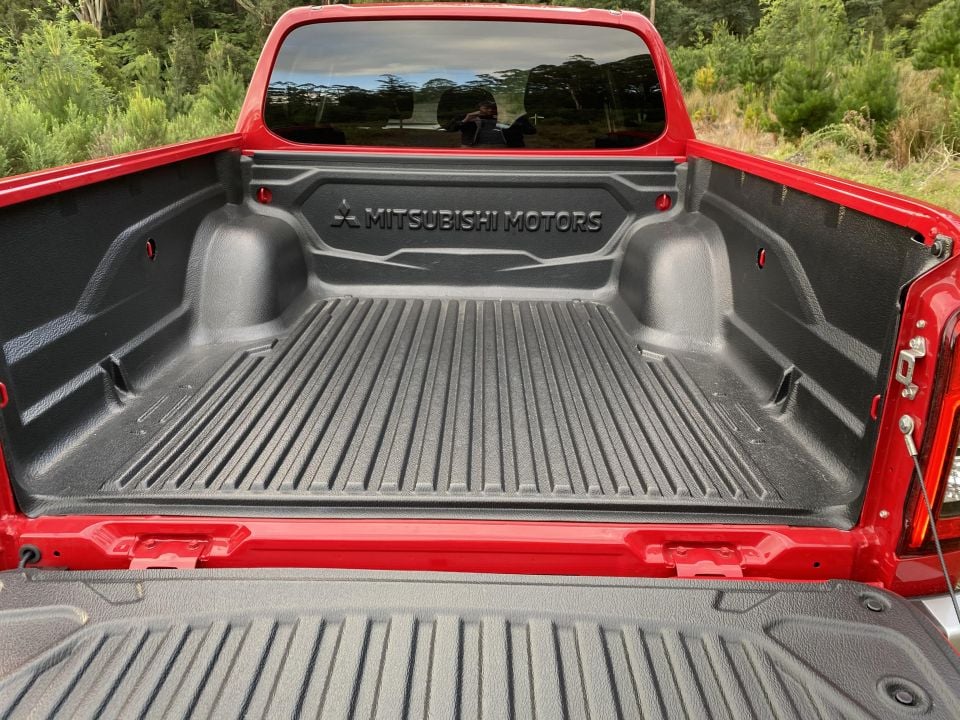

| Mitsubishi Triton | Nissan Navara | |
|---|---|---|
| Length | 5305mm | 5255mm |
| Width | 1815mm | 1850mm |
| Height | 1795mm | 1825mm |
| Wheelbase | 3000mm | 3150mm |
| Turning circle | 11.8m | 12.4m |
| Weight | 1990kg | 1942kg |
| Payload | 910kg | 968kg |
| Tub length | 1520mm | 1503mm |
| Tub width | 1470mm | 1560mm |
| Between arches | 1085mm | 1130mm |
| Tub depth | 475mm | 474mm |
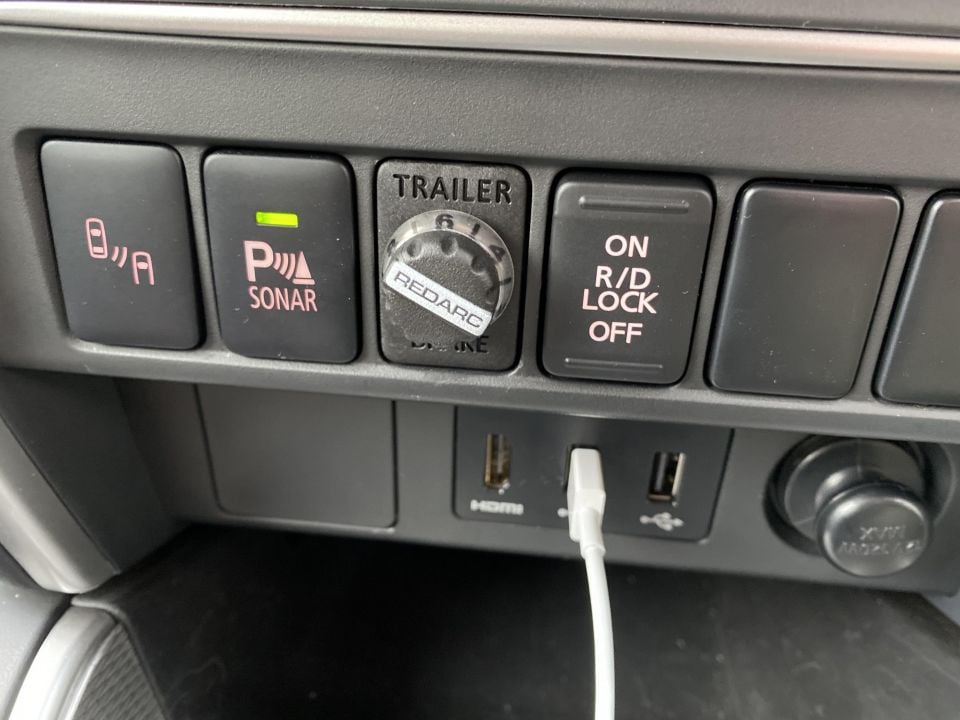
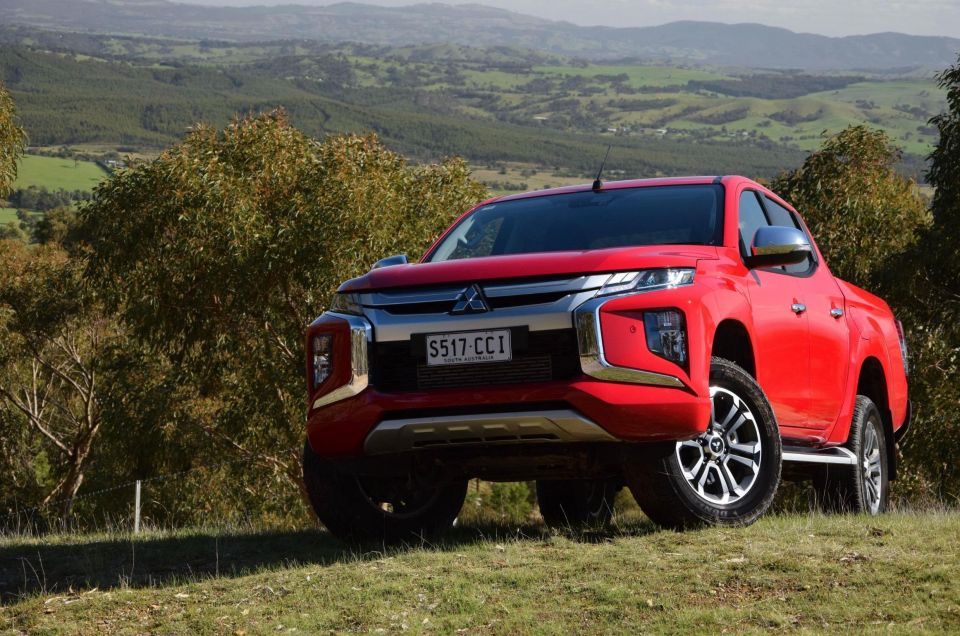
Mitsubishi
A 2.4-litre turbo-diesel making 133kW of power at 3500rpm and 430Nm of torque at 2500rpm. A six-speed manual gearbox is available but here we’re driving the six-speed automatic with column-mounted paddle shifters.
It is a part-time four-wheel drive. It also has Mitsubishi’s Super-Select II 4WD system with familiar rear-drive (2H), four-wheel drive with a locked centre differential (called 4H Lc), and low-range with locked centre diff (4L Lc).
But the GLS’s system also has a 4×4 setting (just 4H) that leaves the centre diff open and uses the electronics to control torque flow, meaning you can drive this way regularly.
A slippery piece of bitumen is often the right place to want all-paw traction, especially with a bouncy leaf-sprung tub behind you. This is therefore an excellent feature, mitigating the risk of component wind-up.
Claimed combined-cycle fuel economy is 8.6 litres per 100km and the tank is 75L, but I averaged 10.3L/100km on my 350km mixed drive. The maximum towing capacity with a braked trailer is 3100kg.
The engine is refined by class standards, with the body and steering wheel at idle largely free of vibration. While it’s down on power and torque compared to a few competitors it’s worth nothing the Triton is lighter – at 1990kg, it weighs 200kg less than a Ranger.
It pulls along fine albeit gruffly under a heavy throttle, and sits happily at 110km/h at about 1800rpm in sixth, quietly enough to make phone calls without necessitating a loud voice.
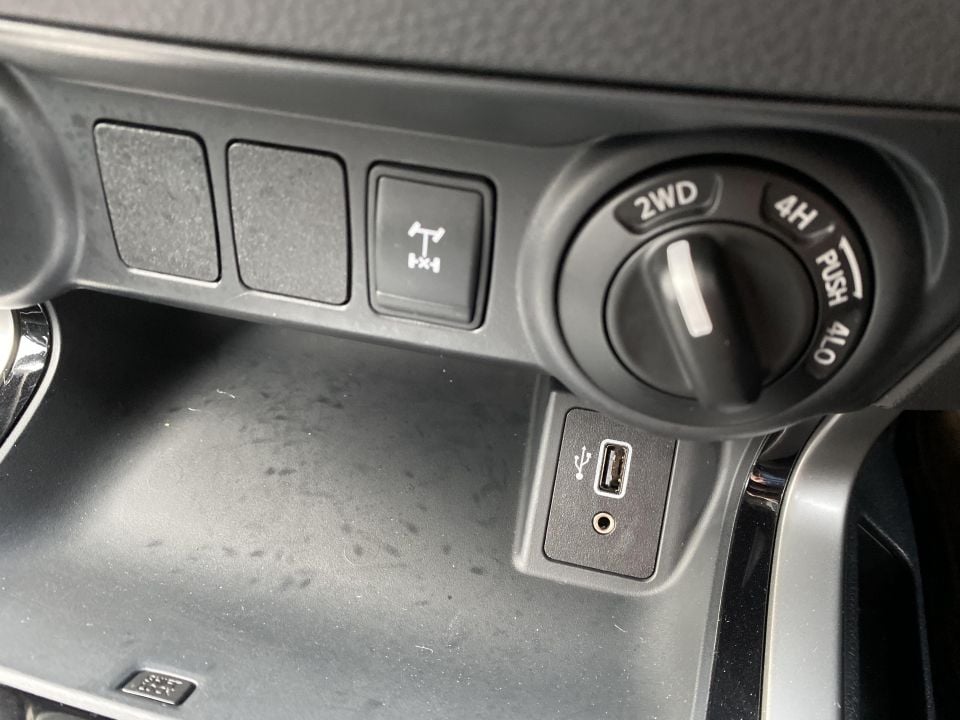
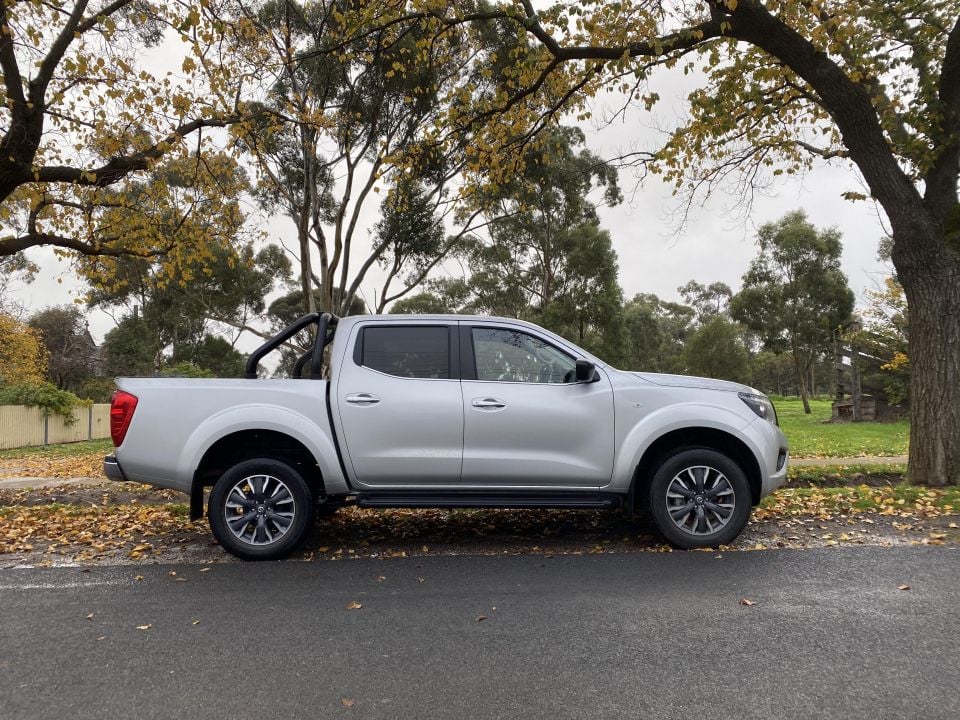
Nissan
The Navara’s 2.3-litre diesel engine has two turbos that operate at different engine speeds, and outputs of 140kW at 3750rpm and 450Nm between just 1500 and 2500rpm.
It’s mated in this test car to a seven-speed automatic transmission with manual mode (a 6MT is available), and a part-time 4×4 system with 2H, 4H and 4L low-range operating modes. It lacks the Mitsi’s second road-focused 4H mode.
Maximum towing capacity is 3.5 tonnes and claimed combined-cycle fuel use is an impressively low 7.0 litres per 100km. The 80L tank therefore promises a driving range above 1100km between refills.
My combined-cycle 3.5-hour drive yielded economy of 8.6L/100km, which remains very good for a ute in this segment nevertheless.
The engine’s strongest point is its refinement, with clattering and vibrations kept low. The Navara is quite a light pickup, and the engine has no issue scooting along. The ratios are also closely-spaced for improved smoothness as well.
So in short, the twin-turbo Navara has more power and more torque, weighs less, has an extra gear, and uses less diesel. The Triton has a cleverer 4WD system with two high-range 4×4 settings.
| Mitsubishi Triton | Nissan Navara | |
|---|---|---|
| Engine | 2.4 single-turbo diesel | 2.3 twin-turbo diesel |
| Power | 133kW @ 3500rpm | 140kW @ 3750rpm |
| Torque | 430Nm @ 2500rpm | 450Nm @ 1500rpm |
| Transmission | 6-speed auto | 7-speed auto |
| Drive | Part-time 4×4, low-range | Part-time 4×4, low-range |
| Fuel economy | 8.6L/100km | 7.0L/100km |
| Fuel tank | 75 litres | 80 litres |
| Towing capacity | 3.1 tonnes | 3.5 tonnes |
| Rear suspension | Leaf springs | 5 linkages, shocks |
| Rear brakes | Drums | Drums |
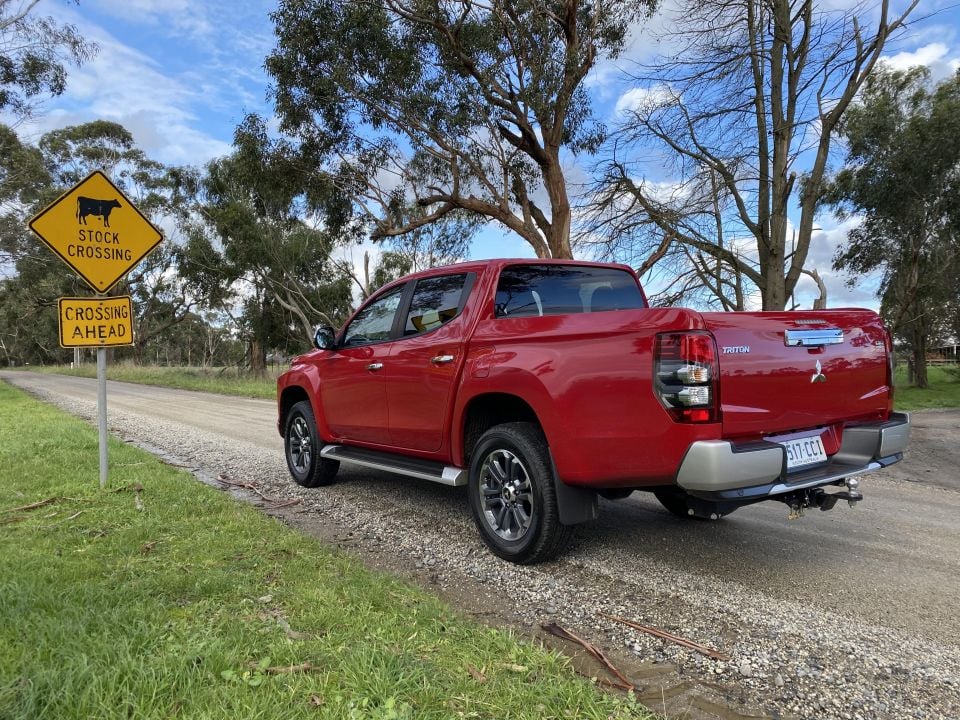
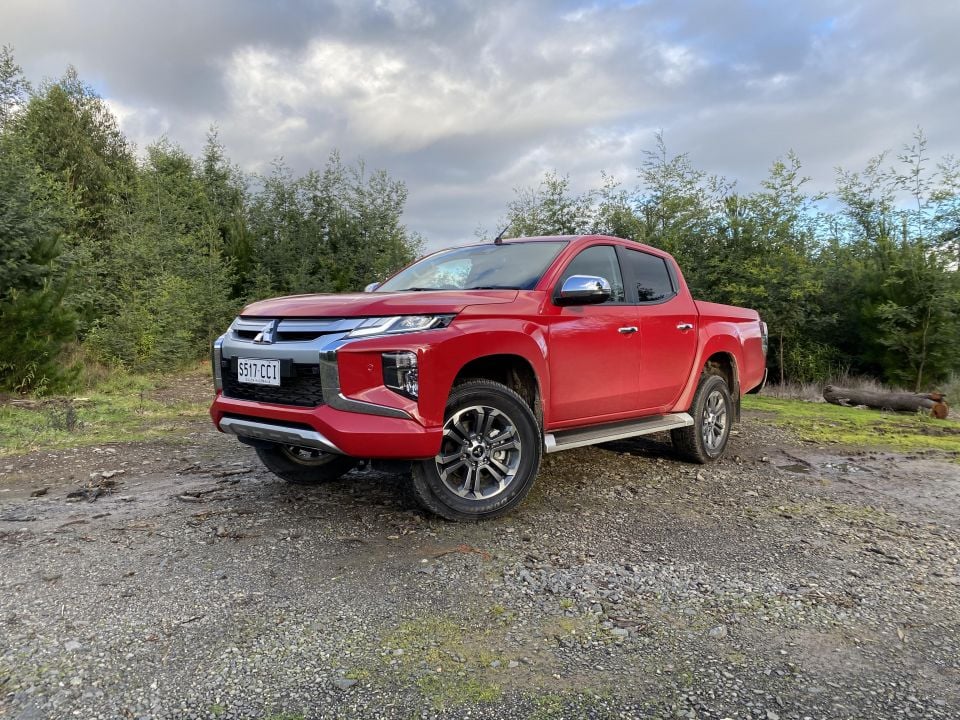
Mitsubishi
It uses leaf springs at the rear like most pickups – Nissan Navara aside – and like most the body jiggles and the ride pogos a little when unladen, while corrugations are felt in your hands through the hydraulically assisted steering.
It’s not as composed as a Ranger or as sharp-handling as the almost SUV-like Amarok, but it’s also far from a class outlier. Indeed, the steering is nicely weighted and consistent, and the Triton’s relative lightness makes it feel almost nimble at times.
The maximum payload is 910kg, which is less than most rivals’. The workhorse grades carry more, since the GVMs are the same and the kerb weight lower. Its gross combination mass of 5885kg means that at payload you can still legally tow anything up to 2985kg.
If there’s one obvious potential shortcoming it’s the particularly long rear overhang. For instance the Triton is only 77mm shorter than a Ranger overall yet 220mm shorter between the wheels. This potentially makes it a smidgen trickier to balance loads and gives it a large departure angle when off-roading.
On the upside, this three-metre wheelbase gives the Triton a smaller-than-average 11.8m turning circle, which is particularly useful in urban conditions or navigating a cluttered building site, but also has useful applications on tight trails.
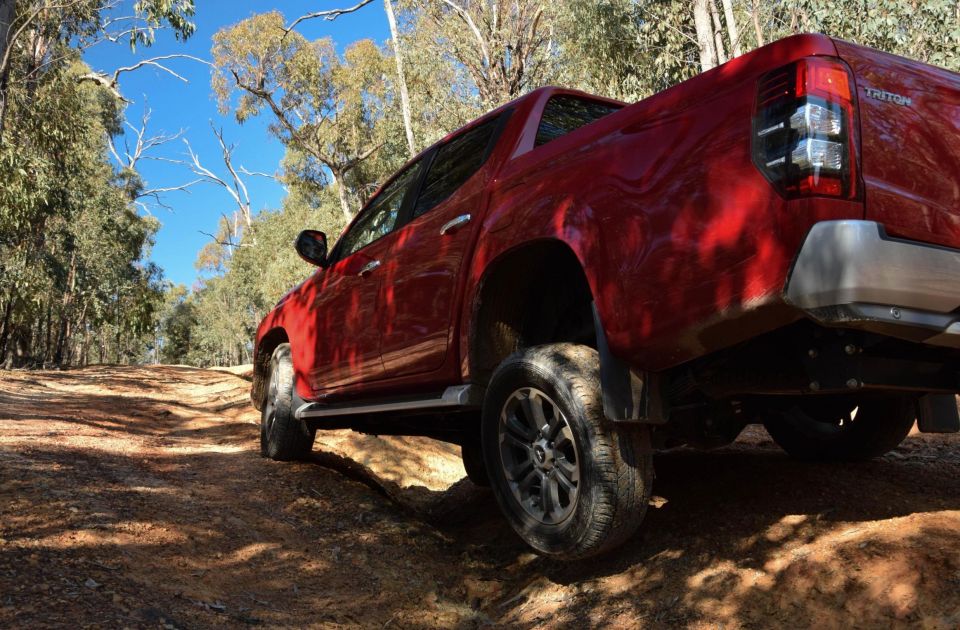
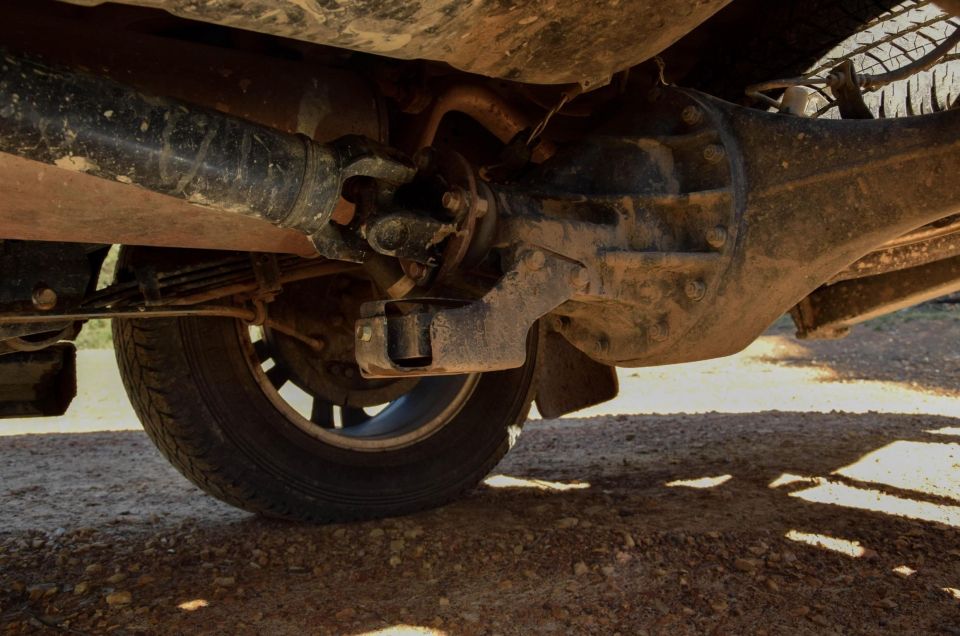
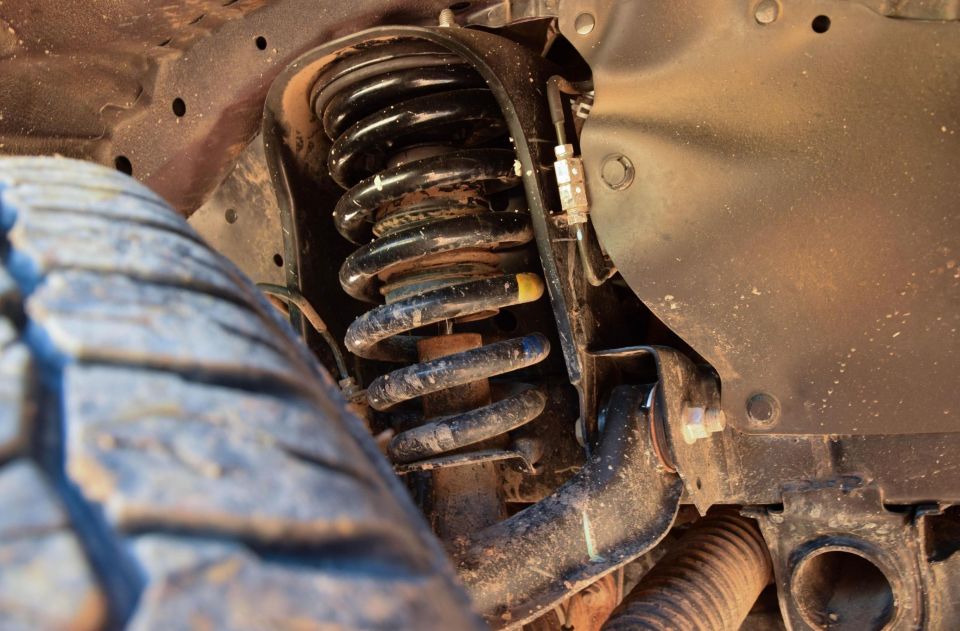
We tasked our off-road expert Simon to take both of these beasts off the beaten path. A summary of his thoughts on the Triton look like this:
More on this: 2020 Mitsubishi Triton GLS off-road review
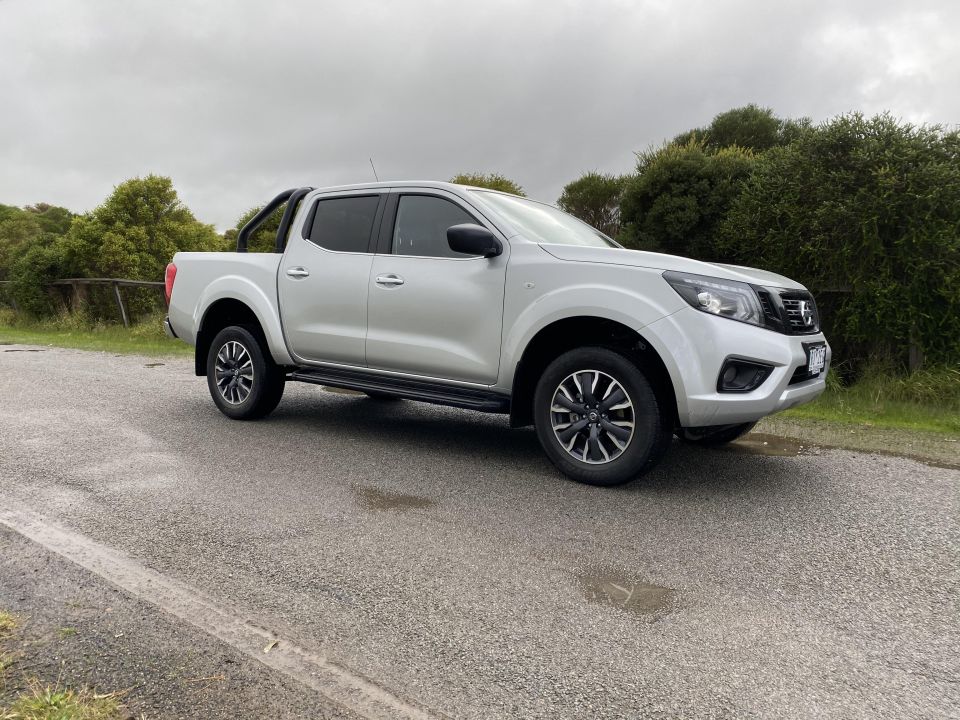
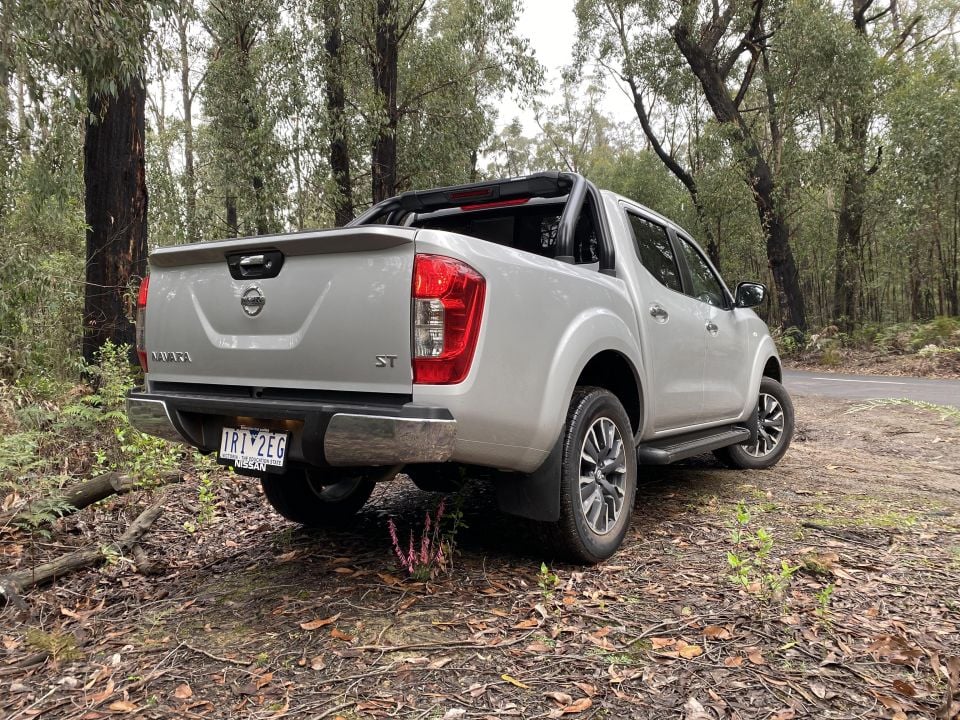
Where expert car reviews meet expert car buying – CarExpert gives you trusted advice, personalised service and real savings on your next new car.
Nissan
The Navara’s dynamic point of different is its two-stage coil rear suspension with linkages.
Early iterations of the D23 Navara sagged notably when laden, but I’ve carried 650kg weights easily in the post-update model on numerous occasions. Payload is an acceptable 968kg, including passengers.
It’s quite a comfortable pickup when unladen, or lightly laden, with less of that typical skipping and bouncing from the tub over uneven or cobbled surfaces. The suspension is simply better-equipped to maximise tyre contact with the road.
If you’re someone looking to buy a pickup as a lifestyle machine, that feels a bit like an SUV with a tray, then the Nissan is quite a capable option.
Another area that Nissan fixed since the original D23 launched is the hydraulically-assisted steering, which is lighter and less unwieldy than it once was, greatly improving its performance in urban conditions or off-road.
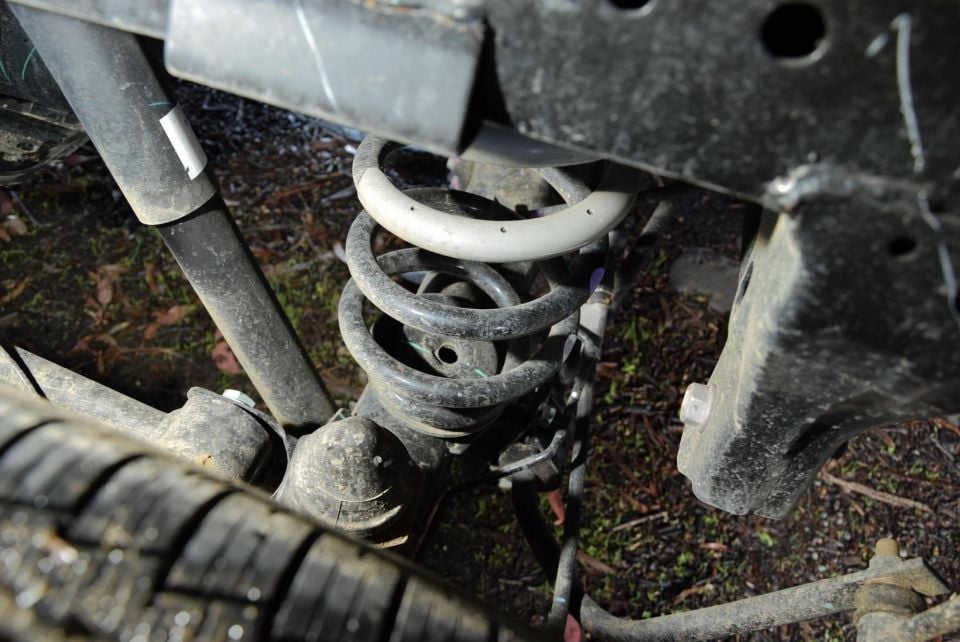

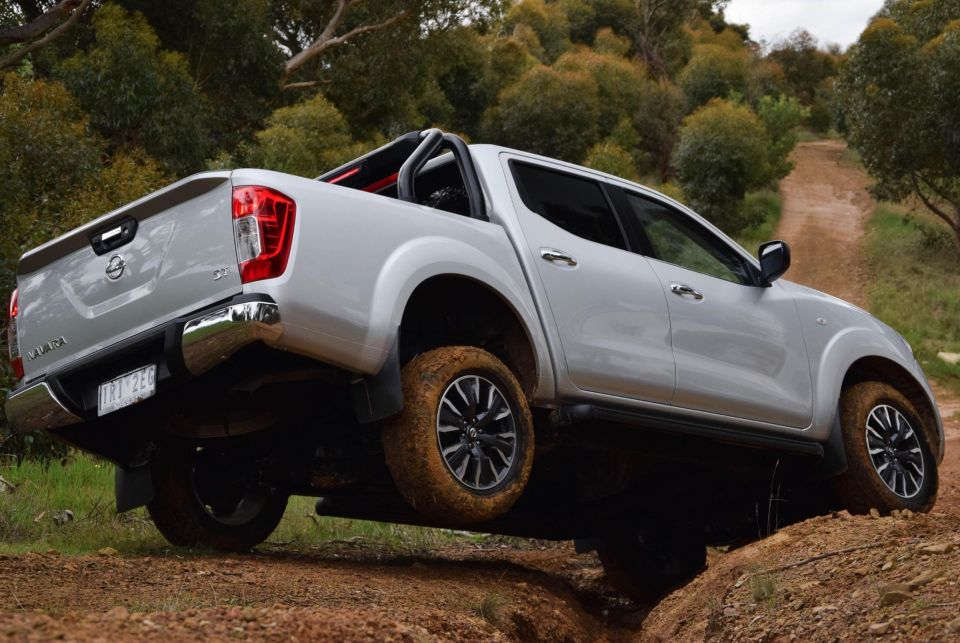
Simon also took the Navara off-roading and a summary of this thoughts looks like this:
More on this: 2020 Nissan Navara ST off-road review
| Mitsubishi Triton | Nissan Navara | |
|---|---|---|
| Ground clearance | 220mm | 226mm |
| Approach angle | 31 | 33.1 |
| Breakover angle | 25 | 24.5 |
| Departure angle | 23 | 28.1 |
| Locking rear diff | Yes | Yes |
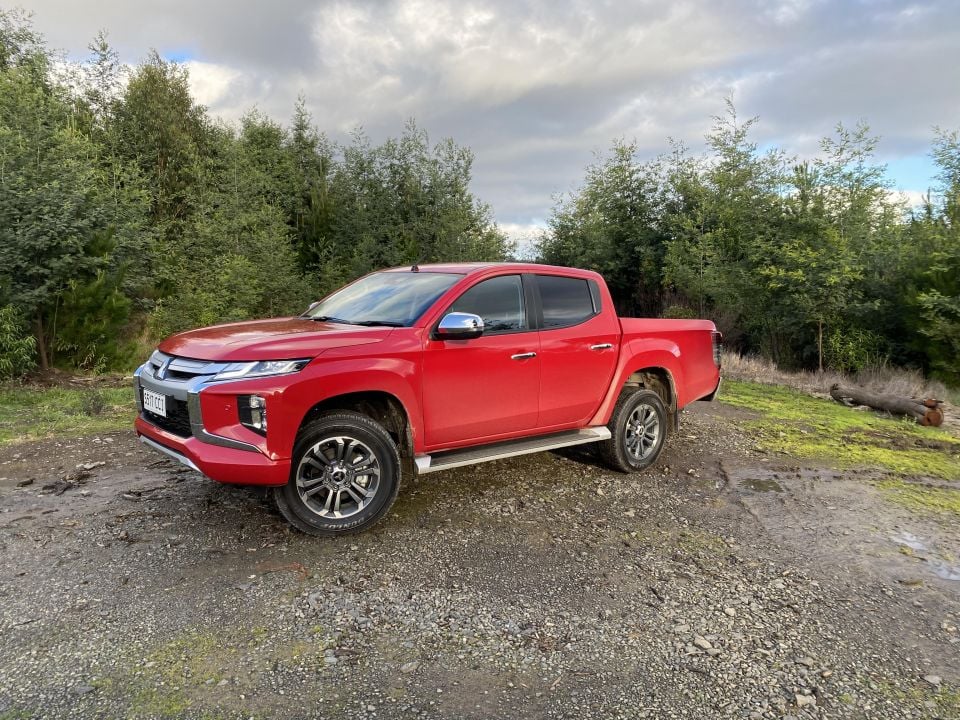
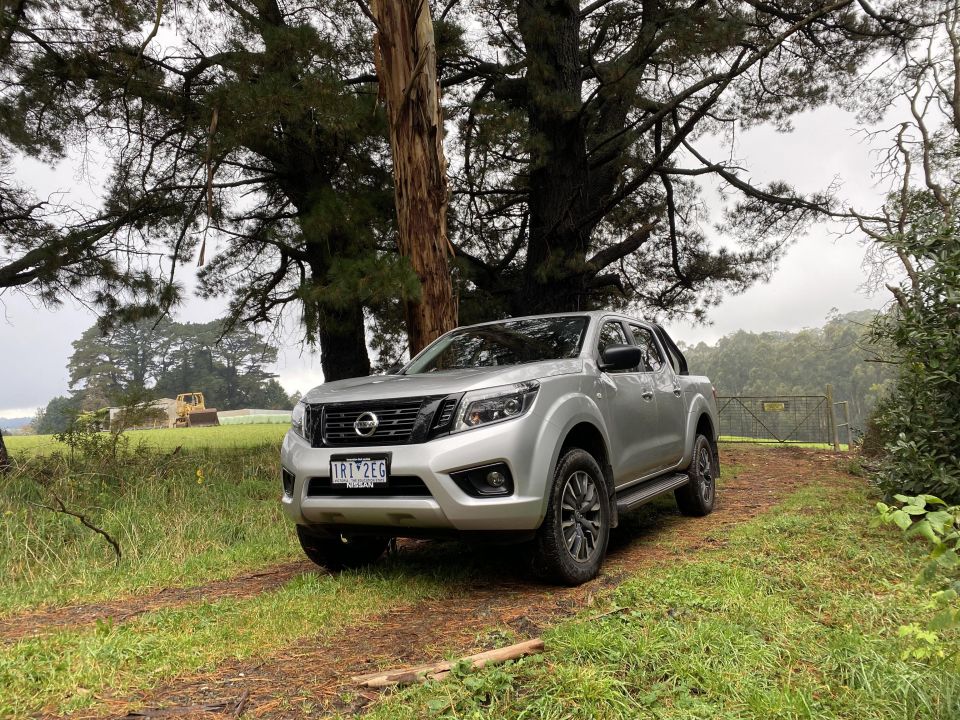
Mitsubishi’s warranty runs for five years but also stops at 100,000km – although it’s currently being offered with a seven-year warranty.
You get capped-price servicing for three visits at 12-month and 15,000km intervals, with each set at a very reasonable $299. Beyond this though, there’s no national capped price.
All Nissans come with a five-year and unlimited-kilometre warranty.
Servicing intervals are a long 12 months or 20,000km (double those of a HiLux). However it’s not that cheap to maintain. The first six visits are capped at: $526, $563, $727, $585, $570 and $798.
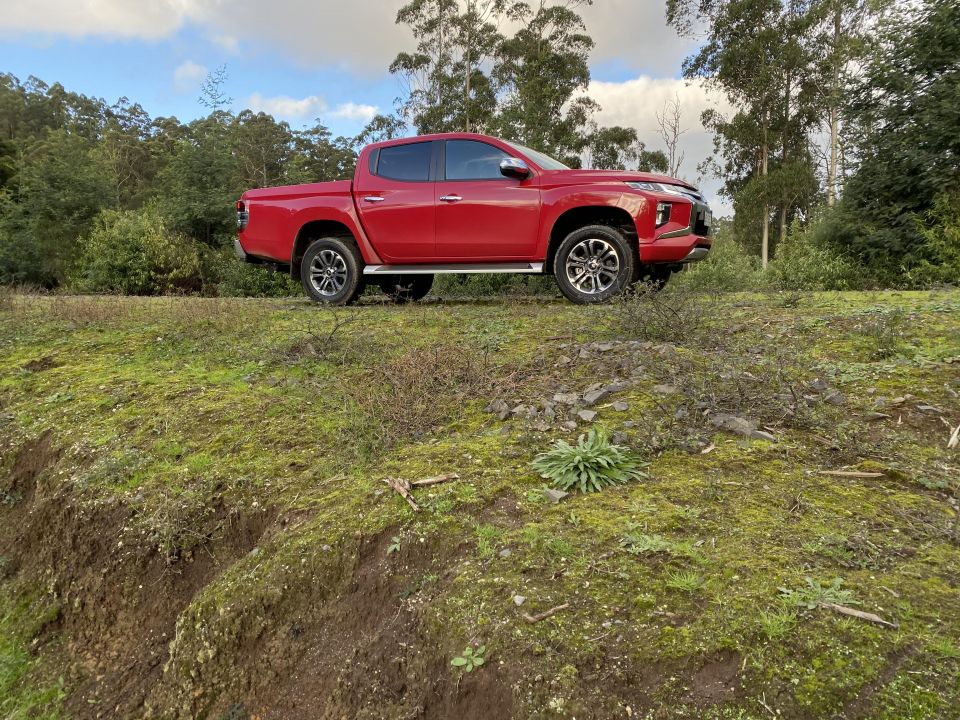
Navara straddles the line between SUV and pickup truck quite well, thanks to its car-like cabin, rear coil suspension, quiet and refined engine, and more wieldy dimensions (200mm shorter and 120mm narrower than a Ranger).
The no-frills Triton isn’t quite as comfy when unladen, fuel efficient, or as well-finished on the inside as the Nissan. But it’s better value, has more safety and luxury equipment, and a trick 4×4 system. And the 400kg lower maximum tow rating shouldn’t matter to the majority of buyers.
I think the mid-range Triton remains the better lower-budget ute out there, for more prospective buyers.
Share your thoughts with us in the comments below!
Share your thoughts and write a review of a car you own and get featured on CarExpert.


Damion Smy
1 Hour Ago


Damion Smy
2 Hours Ago


William Stopford
4 Hours Ago


Matt Campbell
12 Hours Ago


Max Davies
1 Day Ago


William Stopford
1 Day Ago